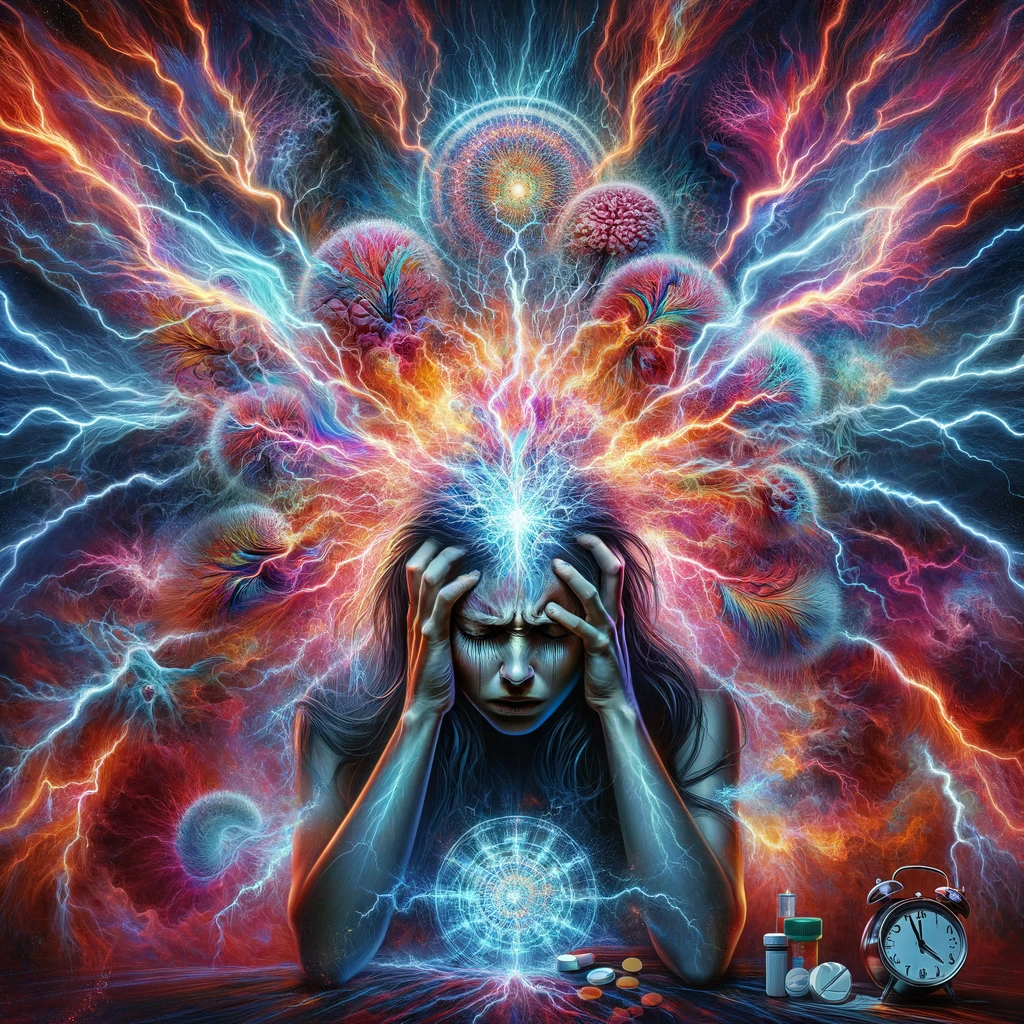Unlike voices in your head, migraines are actually trying to tell you something.
Picture Lisa, a vibrant professional in her mid-thirties, who came to me after years of battling migraines that seemed to strike out of the blue.
Each episode would leave her incapacitated, affecting her work and personal life. Like many, Lisa was frustrated by not knowing what triggered her migraines.
Together, we embarked on a journey to uncover the hidden cues behind her pain, turning what felt like a mystery into a roadmap toward relief.
Migraines are not just headaches; they are complex neurological events that can be triggered by a myriad of factors, each as unique as the individual experiencing them.
Common triggers include stress, hormonal changes, certain foods, and environmental factors like bright lights or loud noises. However, some triggers are less obvious and can seem completely unique to the person affected.
For instance, one of my patients discovered that her migraines were triggered by a combination of dehydration (from drinking more tea than water) and artificial sweeteners.
Another patient found that changes in social settings, a trigger that is often overlooked, were the culprit.
These examples highlight the importance of understanding that while some triggers are well-documented, others are deeply personal and can be as unique as your fingerprint.
Migraines are a complex interplay of genetic, environmental, and physiological factors, with triggers that are deeply personal and sometimes unexpected.
While stress and diet are well-known culprits, other triggers can be more subtle and surprising.
For example, Pat noticed a recurring pattern of severe headaches during the weekends. After a detailed diary analysis, we discovered that these migraines were not due to the usual suspects like alcohol or sleep changes, but rather to the overuse of over-the-counter pain medication throughout the workweek.
This phenomenon, known as a rebound headache, was resolved once less medication was needed, by treating some pressure points near the base of the skull.
Another patient, Sam, shared their struggle with migraines that seemed to worsen in their office environment. It wasn’t until we considered the quality of air and their exposure to screen time that we identified a significant trigger.
Sam explained, “Getting computer glasses and taking fresh air breaks reduce migraines dramatically. I never realized how much my office environment affected my health.”
Migraines speak a language all their own, and learning to decode this language is a vital step toward reclaiming your health and well-being. I encourage you to become a detective in your own health story.
Start by observing patterns, noting what changes in your environment and lifestyle precede your migraines.
To help you in this, I’ve created a Migraine Trigger Checklist template. This tool is designed to help you track various factors and identify your personal triggers.
By understanding what your migraines are trying to tell you, you can take proactive steps to manage them effectively.
Use this template to make your own checklist and begin your path to relief today!
| Date | Time of Day | Food & Drink Consumed | Weather/Environmental Conditions | Stress Level (Low/Medium/High) | Hours of Sleep | Menstrual Cycle (if applicable) | Physical Activity | Symptoms Experienced | Severity of Migraine (1-10) |
| Example: | Example: | Example: | Example: | Example: | Example: | Example: | Example: | Example: | Example: |
| 04/29/2024 | Morning | Coffee, oatmeal, banana | Sunny, dry | Medium | 6 hours | Day 14 | Light yoga | Throbbing headache | 7 |
| 04/30/2024 | Afternoon | Salad, chicken, diet soda | Cloudy, high humidity | High | 5 hours | Day 15 | None | Nausea, light sensitivity | 5 |
This table is meant to be used daily to track various factors that might trigger migraines. It can help identify patterns and potential causes behind migraine occurrences that may be hard to remember later.
Sometimes we just need a little more information. Hope these articles help.

